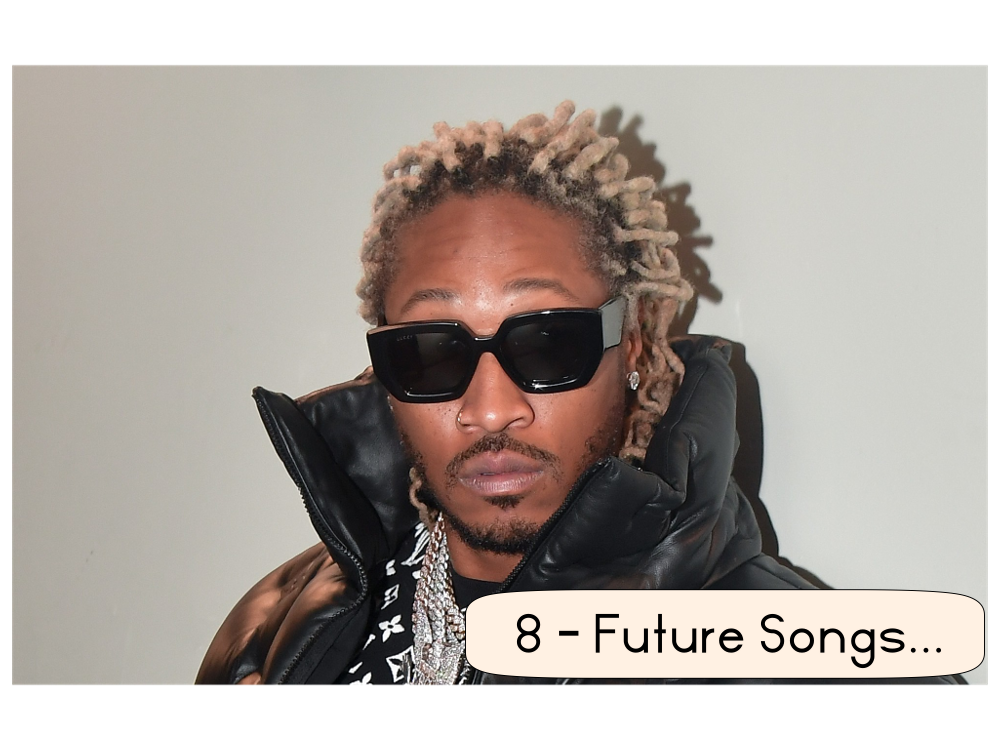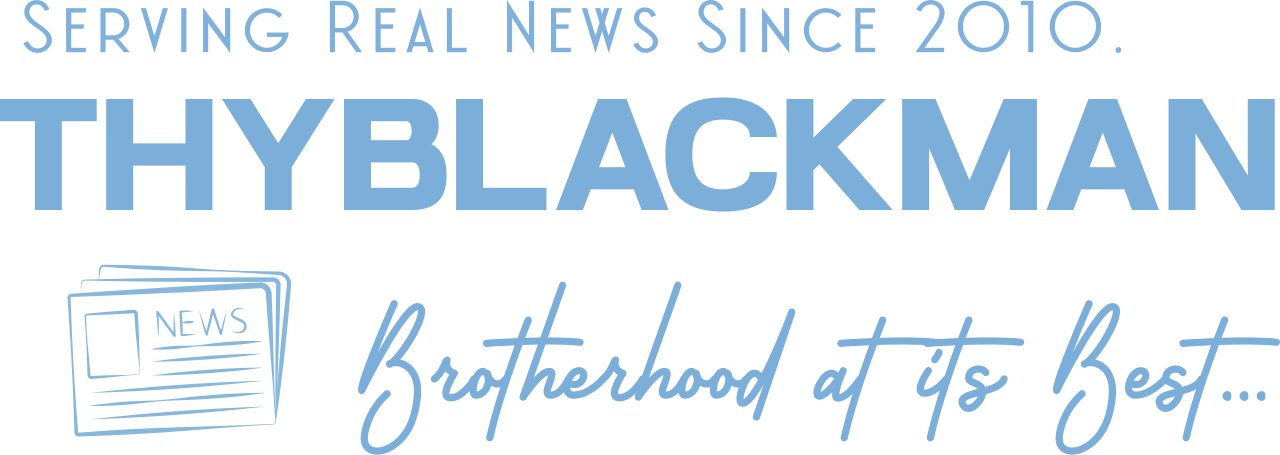(ThyBlackMan.com) Few artists in modern hip-hop have left a mark as distinct and far-reaching as Future. Known for his moody melodies, innovative use of auto-tune, and emotionally complex songwriting, Future has reshaped the sound of trap music while pushing its thematic boundaries. Whether delving into the highs of success or the lows of addiction and heartbreak, his music offers a raw, unfiltered look into a life marked by contradiction—fame and solitude, love and loss, strength and vulnerability.
While his commercial hits have helped define a generation of rap, many of Future’s most impactful works live outside of the mainstream spotlight. This curated selection highlights eight songs that not only showcase the depth of his artistry but also remain deeply relevant in today’s cultural and musical landscape. Each track, in its own way, demonstrates why Future remains a compelling voice in hip-hop—blending innovation with introspection to tell stories that resonate far beyond the genre’s core.

1. “Codeine Crazy”
“Codeine Crazy” remains a crown jewel in Future’s discography—not because it’s a chart-topper, but because it’s a slow burn of emotional catharsis. At a time when rap was still finding its way through the fog of emotional numbness and bravado, this song gave fans permission to feel. It’s Future at his most confessional, stripping away the ice-cold exterior we often associate with trap music to reveal a man overwhelmed by addiction, betrayal, and mental fatigue.
What’s fascinating about “Codeine Crazy” is its ability to sound like a confession and a eulogy at the same time. Future sounds like he’s grieving—perhaps not for someone else, but for himself. For the innocence lost. For the relationships eroded by fame and substance. It’s also one of the rare trap songs where the auto-tune doesn’t create distance—it brings the listener closer. His distorted voice cracks and swells in ways that feel human, not robotic.
The pacing of the song deserves just as much praise. TM88’s production doesn’t race ahead—it hangs like a thick cloud, pushing the listener to sit with every bar. You don’t dance to “Codeine Crazy.” You sit with it. You absorb it. You reflect. It’s the soundtrack to staring out of a car window during a sleepless night or standing in the kitchen, lost in thought. It’s a song you feel, not just hear.
In today’s cultural climate, where mental health and emotional authenticity are finally being centered in hip-hop, “Codeine Crazy” feels like a prophetic blueprint. It’s not just one of Future’s best songs—it’s a turning point in the genre. The emotional rawness here opened the door for a generation of artists to be honest about their struggles, and for that alone, this song is essential listening.
2. “March Madness”
“March Madness” isn’t just a song—it’s a moment. A fever dream wrapped in the kind of cinematic production that demands full attention. As the title suggests, it embodies chaos, urgency, and a sense of cultural madness, but Future turns this chaos into poetry. This isn’t simply a banger for the clubs—it’s a layered narrative about struggle, escape, and defiance in the face of adversity.
What separates “March Madness” from other politically-tinged rap songs is how it cloaks its commentary in vibes. You could easily lose yourself in the groove without catching the gravity of what Future is saying. He doesn’t preach—he floats. And yet, he speaks of societal ills with chilling clarity: “These fuckin’ police can’t touch me (Nah) / These bogus police can’t touch me (Nah)” That line alone—delivered almost casually—speaks volumes about the normalized violence against Black bodies in America.
The beat, courtesy of Tarentino, is lush but not overbearing. It loops in a way that feels infinite, like time bending under pressure. The strings shimmer, the drums pulse, and Future’s vocal cadence threads it all together. His flow dances between rhythmic precision and emotional unraveling. It’s as though every bar is walking the tightrope between revelation and implosion.
Even now, almost a decade later, “March Madness” hits just as hard. Not just sonically, but emotionally and culturally. It’s the kind of track that tells you everything you need to know about Future in four minutes: his pain, his pride, his paranoia, and his unshakable place as a voice for those who rarely get to speak. It’s an anthem for the times—then, now, and likely tomorrow.
3. “Throw Away”
“Throw Away” starts as one song and ends as another entirely. This duality is exactly what makes it one of Future’s most fascinating and emotionally devastating tracks. The first half lulls you into a false sense of familiarity—a low-tempo groove with Future lazily flexing about casual relationships and detachment. It’s moody, repetitive, and by all accounts, typical trap fare. But then, everything changes.
The beat slows, Future’s tone shifts, and suddenly you’re not at the strip club—you’re in his heart. “I won’t ever tell you anything your heart desires (Oh, no) / It’s gon’ be okay, okay, girl, it’s gon’ be okay (Woah, woah)” hits like a sucker punch, and suddenly the bravado falls away. What’s left is a man confronting rejection, heartbreak, and regret. It’s not subtle. It’s raw, almost embarrassingly intimate, like eavesdropping on a private voicemail never meant to be heard.
What makes this song remarkable isn’t just the beat switch—it’s the emotional whiplash. Future takes you from numb detachment to open wound in seconds. He doesn’t explain it, he doesn’t guide you through it—he just drops you into the deep end. And you’re either going to swim or sink with him. That’s the brilliance of “Throw Away.”
Years after its release, the song still resonates deeply for listeners who’ve felt used, misunderstood, or emotionally discarded. It captures the duality of modern love—the lustful surface and the aching core beneath. For all its trap trappings, this is one of the most human moments in Future’s catalog. And it still cuts deep.
4. “The Percocet & Stripper Joint”
“The Percocet & Stripper Joint” might be one of Future’s most misunderstood songs. On the surface, it reads like an ode to excess—drugs, sex, late nights. But to dismiss it as surface-level hedonism is to miss the melancholy buried within. This is a slow, narcotic ballad, and like the substances it references, it’s both alluring and deeply isolating.
The instrumental, crafted by Metro Boomin and Southside, is mesmerizing. It doesn’t bounce—it floats. The synths ripple like light on a swimming pool at night. The drums are distant, almost ghostly. This isn’t a song designed for the club. It’s one for when the lights are low, the room is spinning, and you’re trying to figure out where your night—and your life—is headed.
Future’s performance is subdued and haunting. His voice doesn’t demand attention—it trails behind the beat like a shadow. Lyrically, he paints vivid scenes of hotel rooms, dancers, and prescription bottles, but the real story is emotional emptiness. These aren’t celebrations—they’re distractions. He’s trying to find meaning in motion, in bodies, in chemicals. But the more he chases it, the further away it gets.
Even years later, this song still feels incredibly modern. It echoes in today’s lo-fi R&B and the drugged-out aesthetic of artists like Brent Faiyaz and Don Toliver. “The Percocet & Stripper Joint” is a quiet masterpiece, a snapshot of a man living in the void between indulgence and emotional withdrawal. It’s beautiful, it’s sad, and it’s incredibly Future.
5. “Feds Did a Sweep”
“Feds Did a Sweep” is Future’s whispered reckoning with the criminal justice system and the fragility of life in the streets. It’s not the loudest track on HNDRXX, but it’s certainly one of the heaviest. The song plays like a fog rolling in—quiet, chilling, and impossible to ignore. Instead of a fast-paced rant or an emotional meltdown, Future opts for a numb, stoic tone—because by now, he’s seen it all. And that’s what makes this song so devastating.
The production, ethereal and skeletal, mirrors the eerie calm of a man who’s accepted that nothing is permanent. The background feels like it’s floating in and out of reality—there’s an almost ambient stillness to it, as if Future’s voice is being carried on smoke. That beat choice allows the listener to fully absorb the gravity of each word. “Feds did a sweep / Real niggas linkin’ up (Real niggas)”—a line so simple, yet loaded with grief, guilt, and the emotional wreckage left in the wake of legal raids and targeted oppression.
What makes this song so different from Future’s other work is the balance between street survival and political awareness. He doesn’t frame the sweep as just another setback in his journey; instead, he links it to a broader pattern of systemic policing. There’s no need for lengthy bars—each line is clipped, resigned, and deliberate, emphasizing that this isn’t entertainment. This is documentation.
In the broader context of American hip-hop, where themes of police brutality and incarceration have been reignited through protest movements, “Feds Did a Sweep” feels even more relevant now than when it was released. It’s not flashy, but it’s necessary. And it proves Future’s value not just as a trap artist, but as a chronicler of his generation’s trauma.
6. “Solo”
“Solo” is one of those tracks that reminds you how versatile and emotionally nuanced Future can be. It captures the quiet emptiness of isolation without ever fully collapsing into despair. Unlike the dramatic sorrow in “Throw Away” or the drug-soaked haze of “Codeine Crazy,” “Solo” feels like walking alone through a rainstorm with headphones on—an internal monologue disguised as a pop song.
The production is delicate and shimmering, almost like vapor. It’s the sonic equivalent of watching reflections ripple in a puddle. Everything about the track is designed to convey solitude, but not necessarily sadness. There’s a strange peace to it, like Future has stopped trying to connect with others and is finally sitting with himself—even if he doesn’t like what he finds.
Lyrically, the repetition of “I’m solo” becomes a mantra, an admission, and a form of self-soothing. Future isn’t just talking about being physically alone; he’s addressing the kind of emotional loneliness that fame can bring. The people, the money, the women—they all orbit him, but never truly reach him. His auto-tuned delivery adds to that distance, turning human emotion into synthetic echoes.
And yet, for all its sadness, “Solo” is also a moment of clarity. It’s as if Future is stepping outside the noise and acknowledging how hollow it’s all become. That honesty makes the track timeless. In an era where curated perfection on social media can amplify feelings of disconnection, “Solo” lands with even more resonance. It’s a quiet anthem for anyone who’s ever felt alone in a crowded room.
7. “Trap Niggas”
“Trap Niggas” is not just a song—it’s a cultural artifact. It captures the essence of Future’s rise and the lifestyle that shaped him. Released during one of his most prolific runs, this track became an instant street anthem, cementing his position as the voice of the trenches. What sets “Trap Niggas” apart is that it doesn’t try to soften or disguise its message. It’s direct, raw, and unapologetically proud of the grind it represents.
The beat, constructed by Southside, is a sonic gut-punch—relentless 808s, skittering hi-hats, and a sinister melody that loops like a war cry. It gives Future the space to deliver some of his most commanding bars, not with aggression, but with unshakable conviction. There’s no need for theatrics when you’re telling the truth, and that’s exactly what he does here.
What’s remarkable is how Future flips the concept of the “trap” into a place of honor rather than shame. He’s not glorifying crime—he’s humanizing the people who’ve had to hustle because they were left with no other options. “I got a trap nigga résumé” is more than a boast—it’s a declaration of authenticity in a genre where image is everything. And unlike some artists who cosplay the lifestyle, Future lived it. You can hear that experience in every word.
Even in 2025, “Trap Niggas” remains one of the most powerful introductions to Future’s ethos. It’s defiant, gritty, and true to its roots. For younger fans trying to understand what made Future a street prophet, this song is essential listening. It’s not just about the trap—it’s about survival, legacy, and never folding under pressure.
8. “Turn On the Lights”
“Turn On the Lights” marked a turning point not only for Future’s career but for the emotional possibilities of trap music. Released at a time when most mainstream rap was still dominated by machismo and aggression, this track dared to show vulnerability. It’s one of the earliest examples of Future softening the edges of trap with tenderness—and it’s a big reason why his influence looms so large today.
Mike WiLL Made-It’s production is luminous, building an electronic dreamscape that feels closer to a synth-pop ballad than a traditional rap beat. The layered synths shimmer, while the drums remain understated, letting Future’s voice cut through like a lonely signal in the dark. The atmosphere is spacious, romantic, and even slightly eerie—as if you’re watching someone search for love in a dystopian future.
Future’s vocal performance is where the real magic happens. There’s a robotic fragility to his delivery, created by his signature use of auto-tune. But instead of distancing the listener, it draws you in. You feel his yearning, his hope, and his uncertainty. Lines like “I wanna tell the world about you just so they can get jealous” are oddly pure, revealing a softer side to an artist better known for hard exteriors.
“Turn On the Lights” helped redefine what a rap love song could be. It’s not possessive or predatory—it’s curious, reverent, and idealistic. That was groundbreaking in 2012, and it still feels refreshing today. The song carved a lane for artists like Post Malone, Bryson Tiller, and even Rod Wave to follow. More than a hit single, it was a revelation—and a precursor to the emotional complexity Future would later embrace more fully in HNDRXX.
Future’s music is more than a collection of club anthems and chart-topping singles—it’s a reflective, often unflinching journal of life at the intersection of fame, trauma, and survival. These eight songs provide a window into the emotional and artistic range that has cemented his place as a key figure in contemporary hip-hop. From personal struggles to cultural commentary, Future’s ability to pair melodic innovation with thematic depth sets him apart in a genre constantly evolving.
For listeners seeking more than surface-level entertainment, these tracks offer substance, nuance, and lasting impact. As the soundscape of hip-hop continues to shift, Future’s work remains a powerful reminder that vulnerability and authenticity can coexist with sonic ambition. These songs are not just part of his catalog—they’re pillars of a legacy still unfolding.
Staff Writer; Jamar Jackson

















Leave a Reply